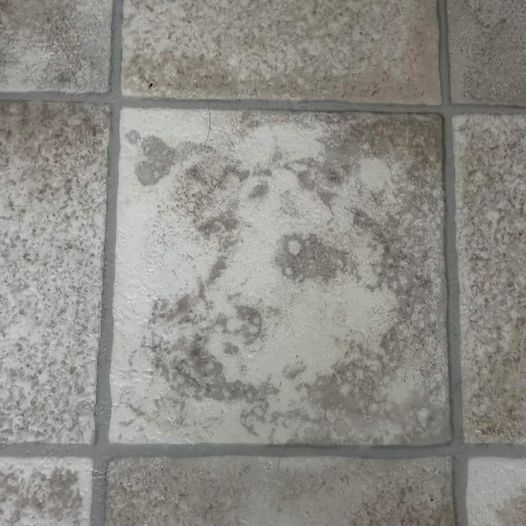There’s a fascinating phenomenon in psychology and visual perception where we recognize faces and other familiar patterns in seemingly random objects or textures. The aforementioned image is a superb example of pareidolia, a peculiarity. Upon closer study, what appears to be an ordinary tile floor turns out to be something more intriguing: a faint face.
Pareidolia: What is it?
When the brain perceives random stimuli—such as noises, patterns, or shapes—as something meaningful, usually a face or figure, it is said to be experiencing pareidolia. This explains why we sometimes see faces in rock formations, animals in clouds, and in this instance, a face in a chipped floor tile.
Our innate ability to recognize faces comes from evolution; it allowed us to distinguish between friends, enemies, and other living things from a distance. Because our brains are so good at filling in the blanks, they can even recognize faces that merely resemble one another vaguely.
An Upclose View of the Tile Face
A face with eyes, a nose, and a mouth is depicted in the picture, its rough texture outlining the features. The “mouth” could be a subtle curve, the “nose” a central smudge, and the “eyes” darker patches. The face looks spectral, like a secret individual sticking their head out to be noticed.
This example of pareidolia turns a commonplace item—a floor tile—into something enigmatic and creative. This face may inspire awe or perhaps a hint of spookiness in certain people, giving the impression that the otherwise lifeless environment is surprising us in strange ways.
Why Are Faces Seen?
It’s not uncommon to see faces in inanimate items, such as wall patterns or tiles, despite what you might assume. This inclination is a result of our survival and social interaction needs from evolution. Early humans relied on their ability to recognize faces quickly in order to identify threats and identify allies. With time, human minds developed the ability to read even the smallest facial cues, sometimes to the extent of being overly literal.
According to scientists, the capacity to discern faces has probably contributed to the creation of art as well as the ability to read emotions and comprehend social interactions. It emphasizes how the brain is able to interpret information from the outside environment, even if that interpretation is only mental.
The Pareidolia Artistic Side
Pareidolia has an aesthetic side in addition to its scientific foundations. Discovering hidden imagery in the surroundings has long served as an inspiration to artists. This kind of art invites spectators to see past the obvious and discover beauty in the unexpected.
One could consider the tile face in the picture to be a work of natural art, an unintentional masterwork molded by wear, time, and our imagination. It serves as a reminder that, if we stop to notice it, art can be found anywhere, even in the most ordinary settings.
In summary
Take a deeper look the next time you’re strolling on a tiled floor, looking up at a cloud-filled sky, or looking at a wall with texture. There could be a face gazing back at you. More than just a psychological trick, pareidolia illustrates how our minds perceive the world and find awe in the commonplace. These flashes of recognition, whether it’s a face on a tile or a silhouette in the dark, serve as little reminders of the beauty concealed in the ordinary.


